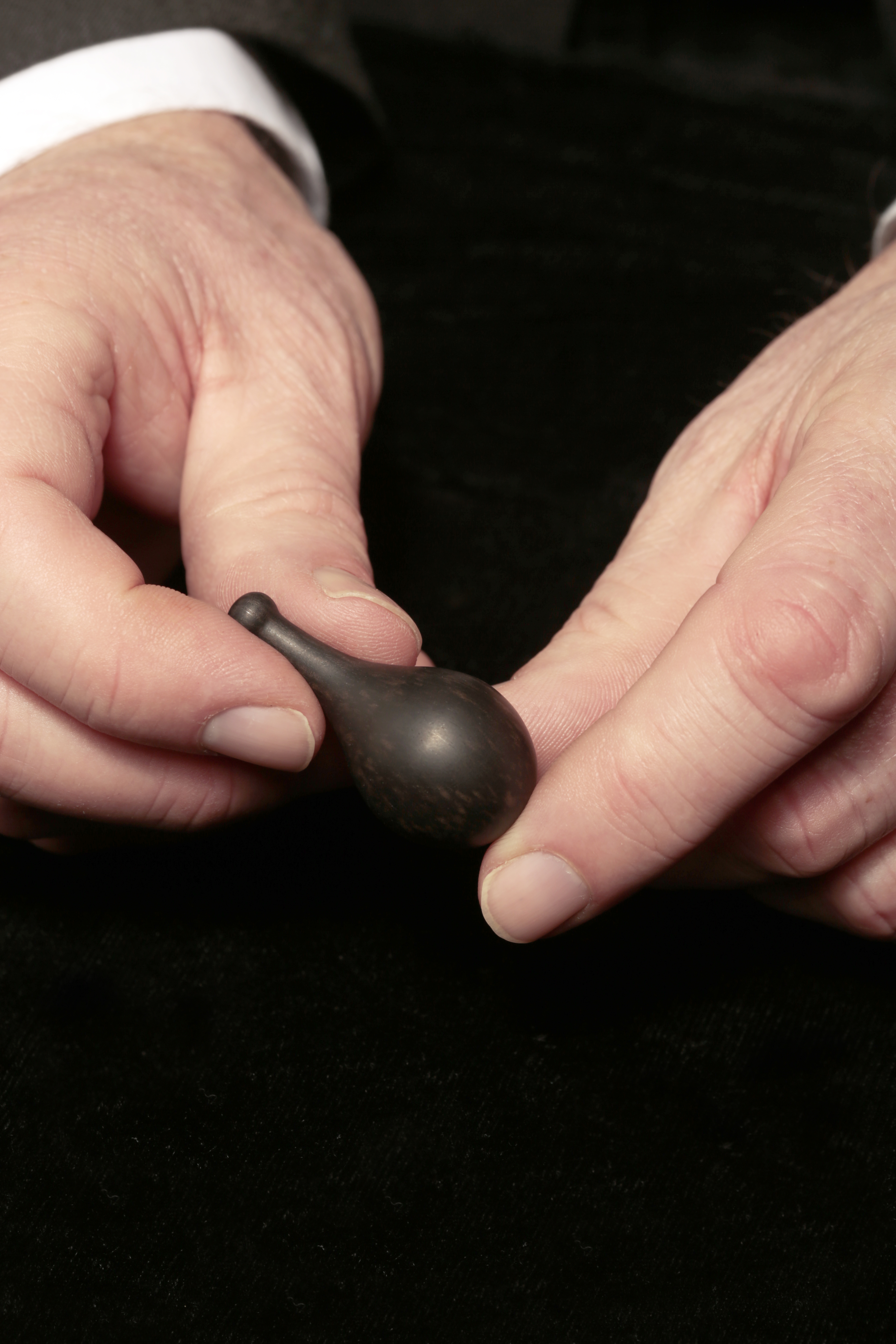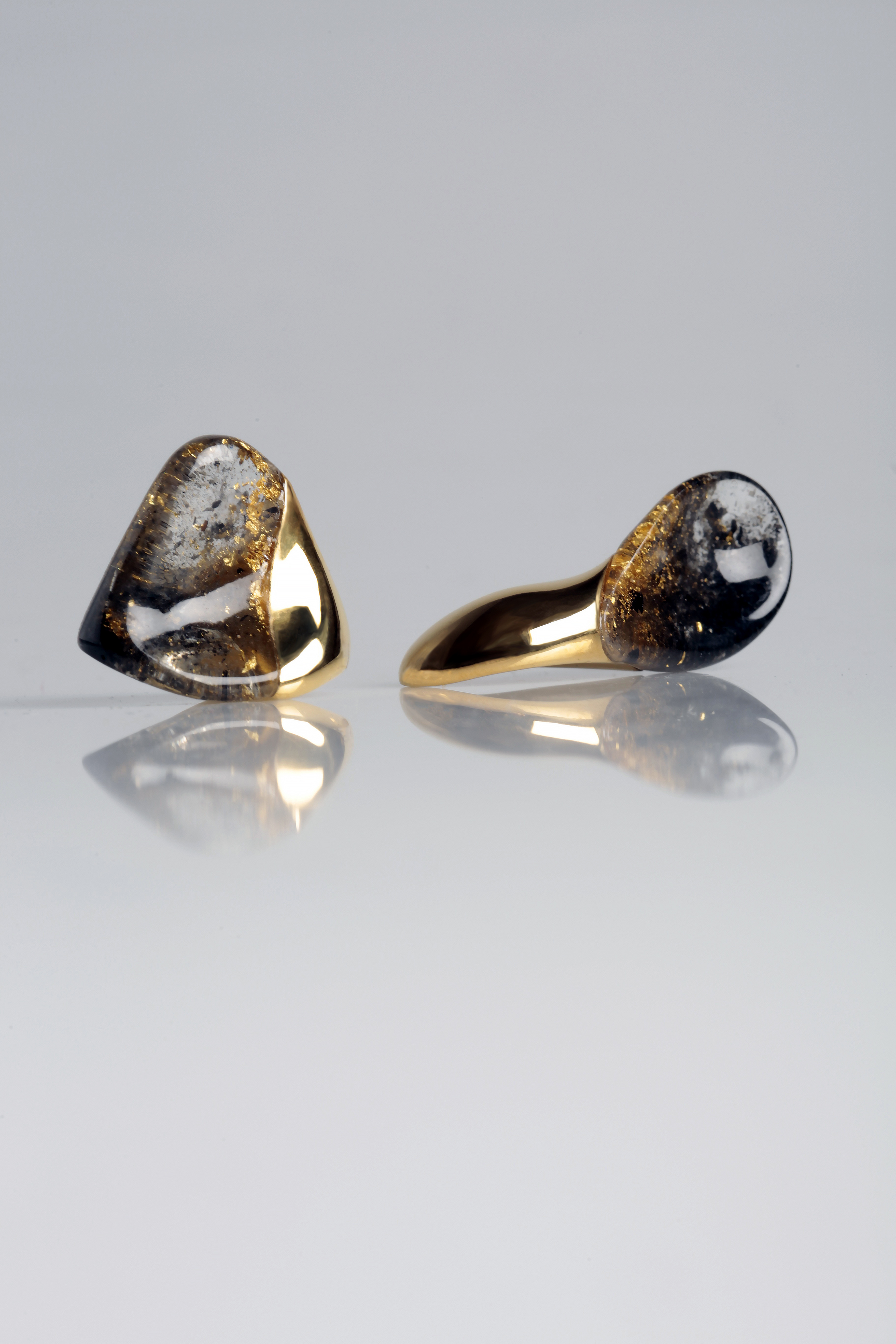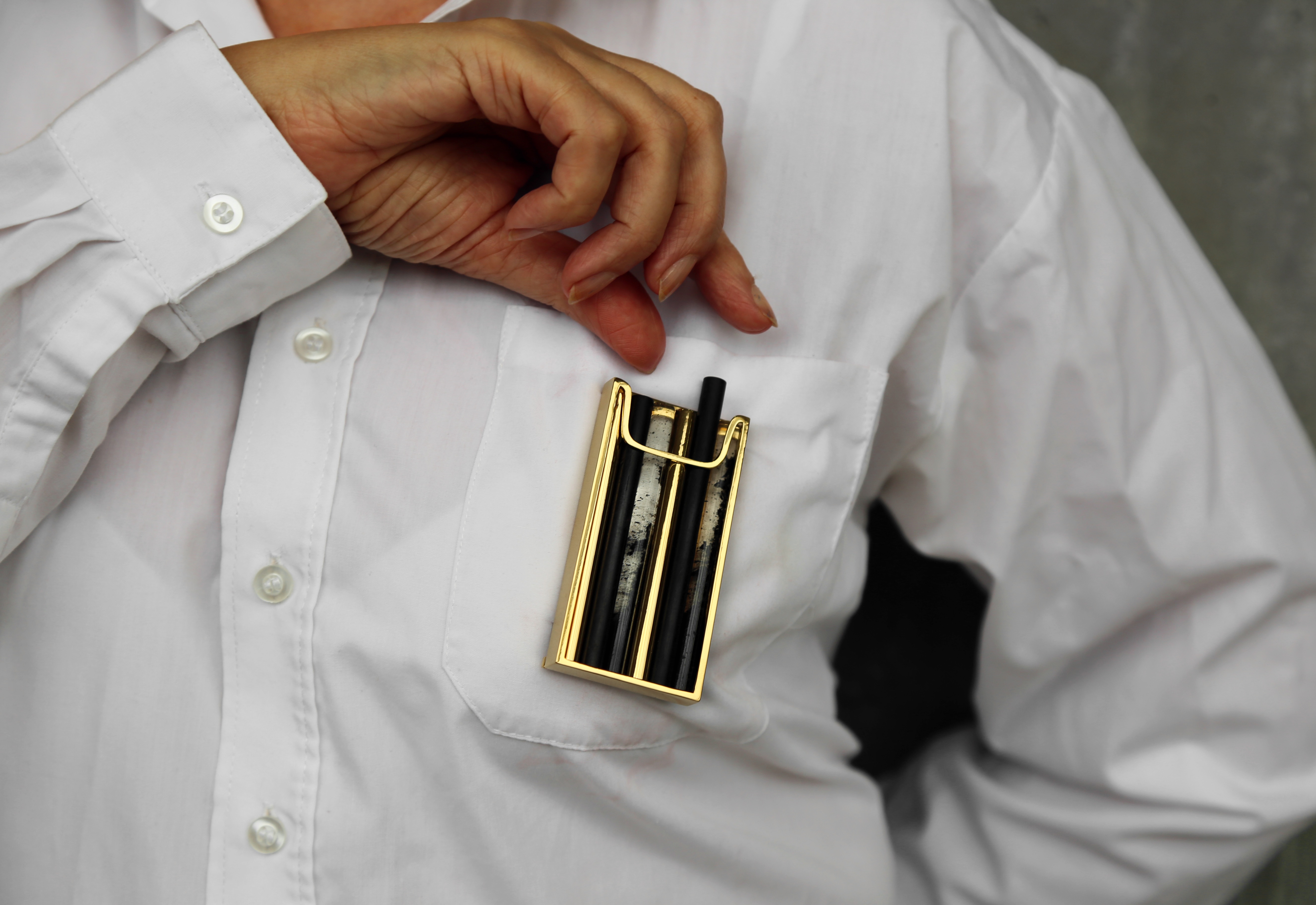
We have been thinking about angst a lot recently, as our “Summertime Angst” issue addresses the topic head-on. But what of anxiety? It’s a subject which has been discussed more and more in recent years, as mainstream channels are more vocal about mental health. Charlotte Garnett has formed a project around her own experiences of mental illness. Her “anxiety jewellery”, items which are designed to naturally follow the various ways in which we fiddle with jewellery to settle our nerves, allows the wearer to subtly “stim” (the physical repetition of movements) without feeling self-conscious. The artist was recently a studio resident at Sarabande, Lee Alexander McQueen‘s London foundation.
Why did you begin to make anxiety jewellery? Was this quite a natural progression from shapes and forms you were already working with, or did you start out thinking about anxiety and then find the forms to fit?
I began making anxiety jewellery in my third year studying at CSM. Whilst I’ve dealt with mental illness throughout my life, this was when I especially started to struggle with anxiety. I’ve always enjoyed creating emotionally-charged and poignant art, taking inspiration from my own life, so it made sense to turn an all-encompassing negative into the fuel for my debut collection.
Whilst I had already been working autobiographically, I hadn’t been working in such a tactile way before, so the forms were very heavily influenced by my research and feedback fused with the style I had begun to finesse as my own.
“I very much started my work with research into medical history, psychology research and treatment methods”

How do you want the wearers of your jewellery to feel?
Confident, calm and in control. I think the fusion of function and style in my work is very important to promote a sense of pride in wearers who might have been made to feel that talking about or looking after mental health is somehow shameful. Looking after your mind with something you are proud to show off is how my work aims to break social stigmas, whilst improving individuals’ day-to-day lives.

Have you looked into the science behind why we fiddle with objects when we’re anxious? Or is this done very much on instinct and observation of others?
I very much started my work with research into medical history, psychology research and treatment methods, but the design process certainly relies on instinctual responses.
“I began to prototype my shapes by observing different types of innate fiddling and getting feedback from my peers”
I started by identifying the specific behaviour that causes everyone, mentally ill or not, to engage in fidgeting behaviours in stressful situations—a behaviour called stimming which occurs to subconsciously block out excess stimulus and help us focus. This led me to read psychology papers researching the trauma-blocking effects of repetitive hand movements, my favourite of which discussed Les Tricoteuses: a group of French women who came to symbolize jaded France for knitting during public guillotine executions, but who are now hypothesized to have used this repetitive action to deal with the stress and remain composed. Using these findings I began to prototype my shapes by observing different types of innate fiddling and getting feedback from my peers by providing my prototypes at class critiques or for therapy sessions.

Are there any items in the collection that you are particularly drawn to when you’re anxious?
Each of my shapes caters to a different style of fiddling, so for me the Pinch Pebble shape perfectly suits my subconscious movements and helps me practice mindfulness and ground myself in my anxious moments. I wear my Turn necklace every day and use it not just when I feel stressed but whenever I’m seeking a bit of comfort, even when I don’t notice. I also wear a Point ring at all times, as for me it provides a vital distraction tactic during panic attacks that stops them from escalating, whilst appearing as a stylish jewellery staple.

Can you tell me a little about your time at Sarabande?
Sarabande was and continues to be a life changing experience for me. Without the opportunity for a subsidized studio and the support of such a vibrant team I would probably have not got to the where I am now. Being part of the start of such a legacy was inspirational and motivating and helped me build my confidence and skills to start my brand. My favourite part of the experience was working in the multidisciplinary community created by the foundation. It helped encourage the sharing of knowledge that invigorates creators, and sparked many collaborations and friendships along the way.





